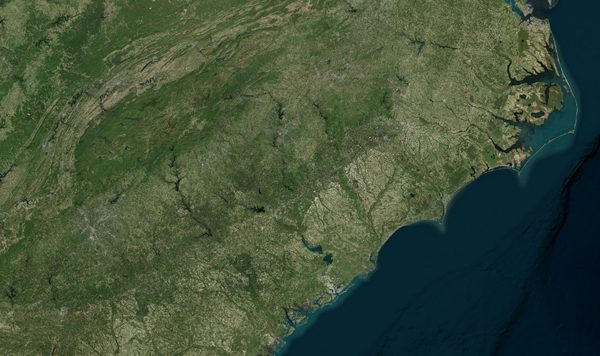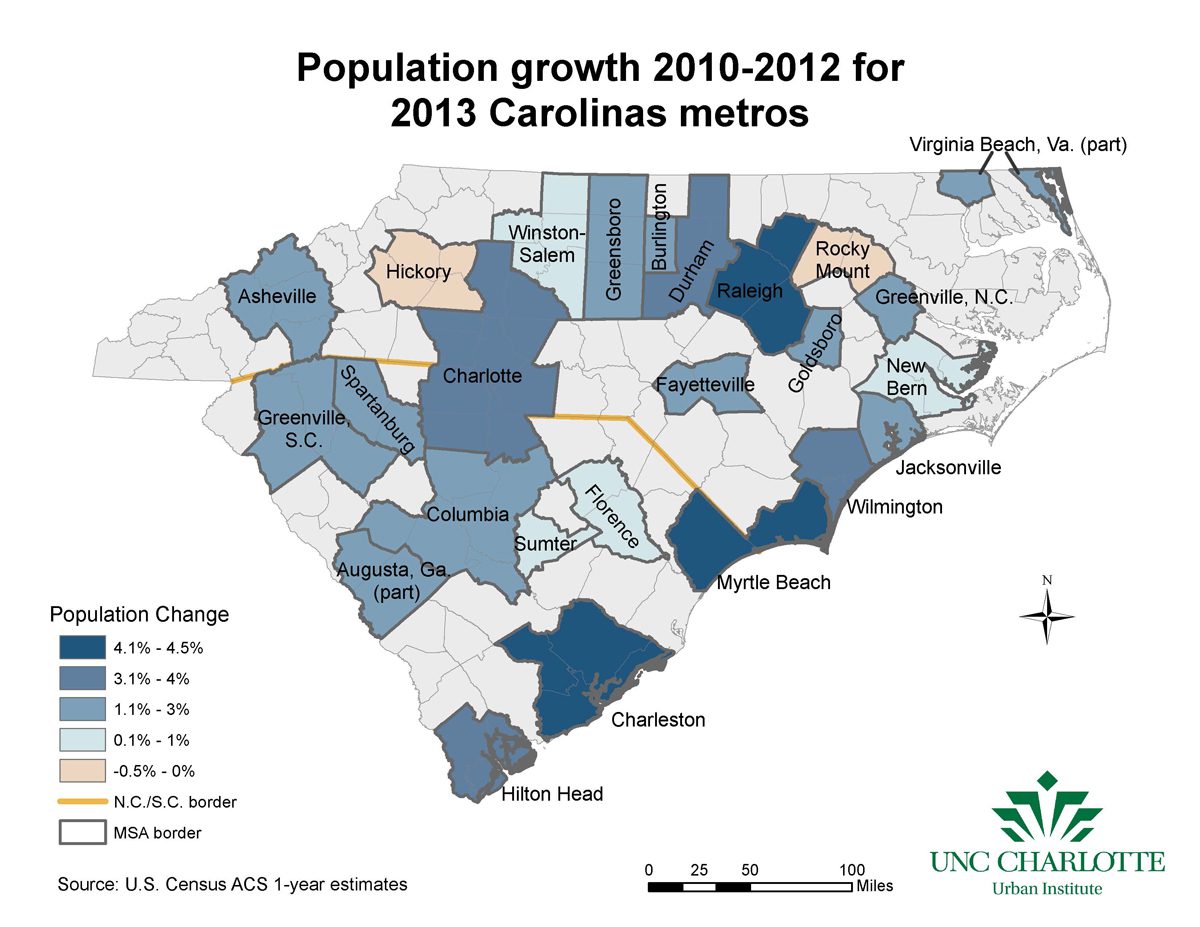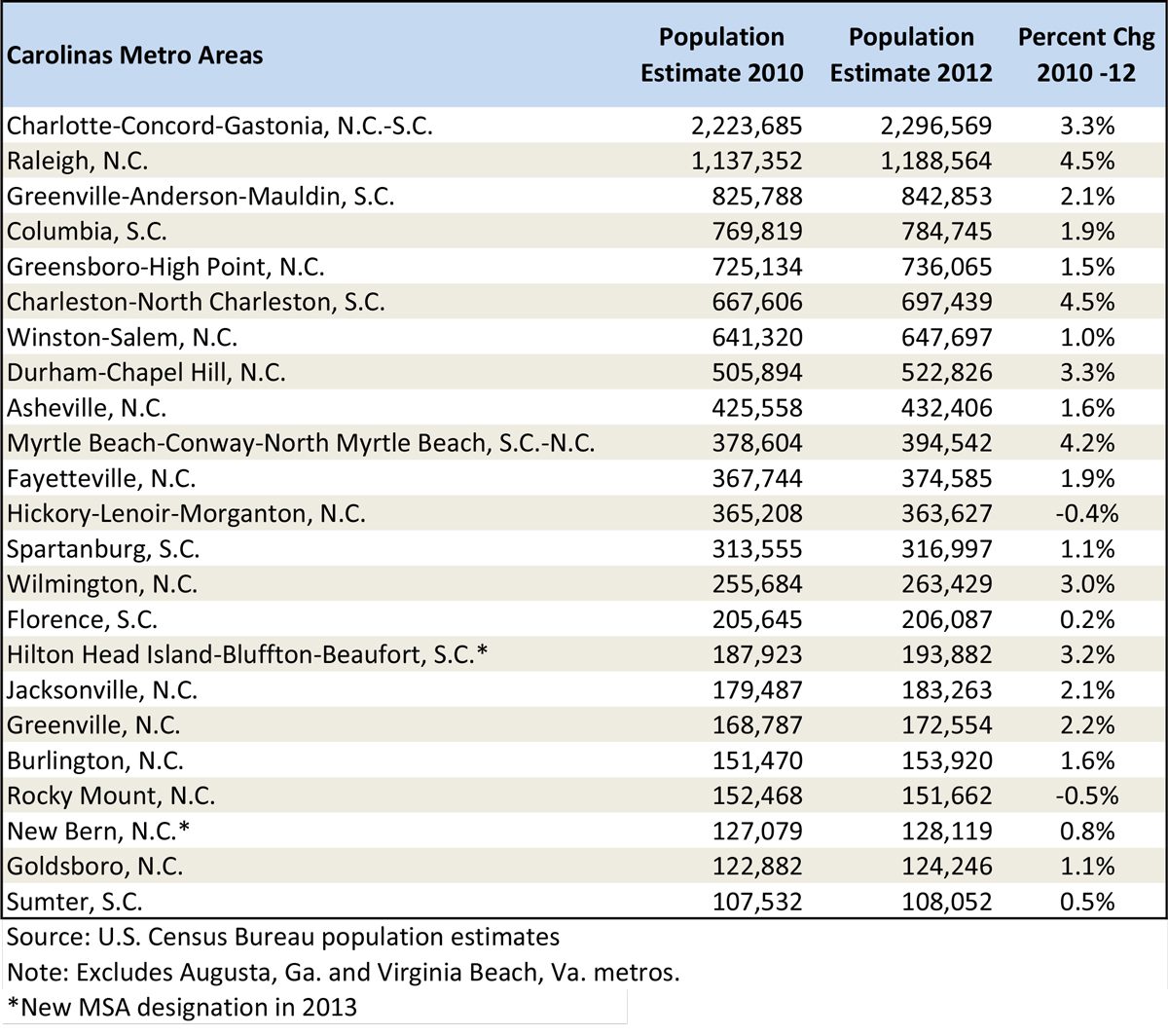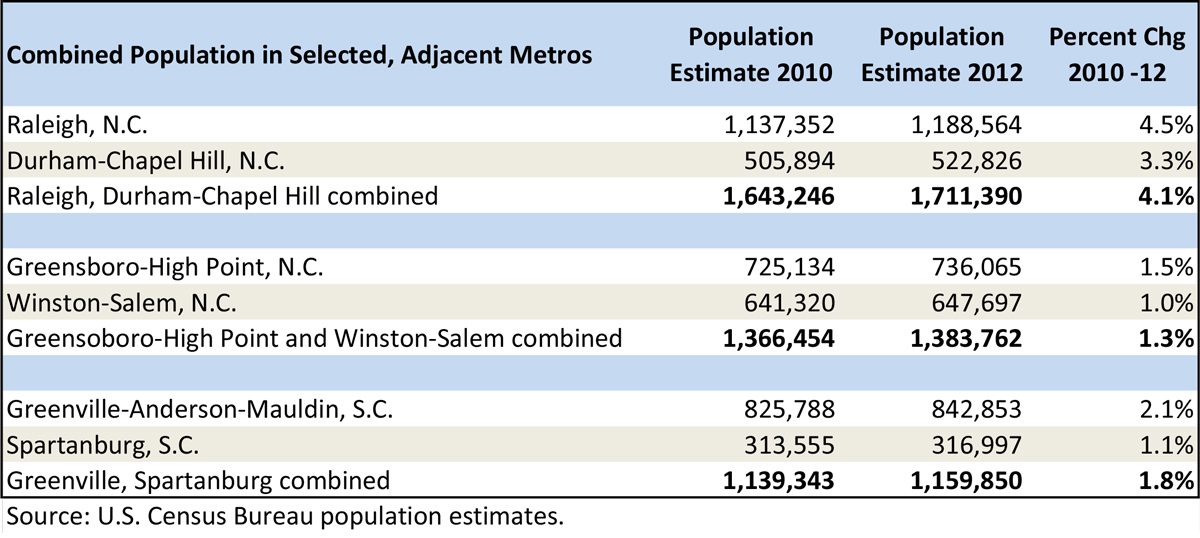Carolina metros: Changes in the landscape

In the Carolinas, only Charlotte’s metro area tops 2 million people. Raleigh is roughly half Charlotte’s size at 1.2 million. These two metros have pulled away from the pack of the other Metropolitan Statistical Areas in the Carolinas; no others top 1 million in population. Ten years ago, the metros in the two states were surprisingly different.
Remember the Triangle – Raleigh, Durham and Chapel Hill? How about the Triad – Greensboro, Winston-Salem and High Point? Greenville-Spartanburg? Those were all Metropolitan Statistical Areas (MSAs) 10 years ago that in 2003 were split apart in an updating of MSAs based on census data.
|
More about the changes to Charlotte’s MSA Commuting is the key factor in adjusting MSA boundaries. Read more about the latest changes and see a detailed map. |
Growth and evolving commuter patterns trigger adjustments to the boundaries of MSAs, and the boundary changes are typically released about three years after a census. In 2003, the result of those adjustments was a larger number of metros across the Carolinas. This year’s changes, reflecting the 2010 census, are different. Charlotte’s metro has grown by nearly a half-million in population, because it went from six counties to 10. Two new coastal MSAs have been created.
The map below shows the MSA boundaries for the Carolinas that were released in February 2013. Metros are shown in colors based on their growth rates since 2010.

Note: Full MSA names are shown in table below.
The MSAs show strong population growth along much of the coast, especially from Hilton Head to Wilmington, with the Raleigh, Durham and Charlotte metros having the highest growth rates among MSAs in the Piedmont. Among Carolinas metro areas, only the Hickory-Lenoir-Morganton and Rocky Mount metros saw declining population since 2010.
Historic patterns of city development have resulted in relatively similar-sized cities near each other in several areas. (Examples include Greenville and Spartanburg in South Carolina and Greensboro and Winston-Salem in North Carolina.) The changes this year, in which the Charlotte-Concord-Gastonia metro went from six counties to 10, reflect another pattern – a region with only one large city with a growing metropolitan reach. The Charlotte MSA is the largest in population, by more than 1 million, as well as having the most counties of all the Carolinas metro areas. That’s still a far cry from the dominance of the Atlanta metro in neighboring Georgia, which added counties this year to a new total of 29 (called the Atlanta-Sandy Springs-Roswell metro). That means the Atlanta region takes up almost 20 percent of Georgia’s 156 counties.
Changes in the Carolinas from the previous (2009) MSA designations include:
- New MSAs created for Hilton Head, S.C., and New Bern, N.C., on the coast.
- Five counties added, one removed in the Charlotte metro.
- Davidson County added to the Winston-Salem metro.
- Anderson metro (Anderson County, S.C.) combined with Greenville (S.C.) metro to create the Greenville-Anderson-Mauldin, S.C. metro.
- Gates County, N.C., added to the Virginia Beach, Va., metro.
- Greene County, N.C., removed from the Greenville, N.C., metro.
- Brunswick County, N.C., moved from Wilmington metro to the Myrtle Beach-Conway-North Myrtle Beach (S.C-N.C.) metro.
The table below shows the updated Carolinas metro areas ranked by size.

Adding Anderson to the Greenville, S.C., metro area brings that MSA’s population up to third in the Carolinas, but still leaves no S.C. metro with more than 1 million people. Since many people still think of the Greenville, S.C., metro as including neighboring Spartanburg (although in official census designations it has not for a decade), the table below shows the combined populations of those two MSAs as well as two in N.C. (the Triad and Triangle), to give some idea of how much the rules guiding the Office of Management and Budget (which releases the official MSA lists) can change the perception of cities and metro areas.

These combined figures are shown only for comparison. However, if the Triangle were combined into one metro area, and the Triad into another, rankings would be different. The move of Brunswick County, N.C., from the Wilmington to the Myrtle Beach metro caused several reactions by local politicians and business leaders. Earlier this month, the Wilmington City Council passed a resolution asking federal officials to return Brunswick County to Wilmington’s metro area (story here).
Note: Metropolitan area definitions are from the Office of Management and Budget. Greensboro and High Point are still paired in the latest metro configurations, but Winston-Salem is now a separate metro.